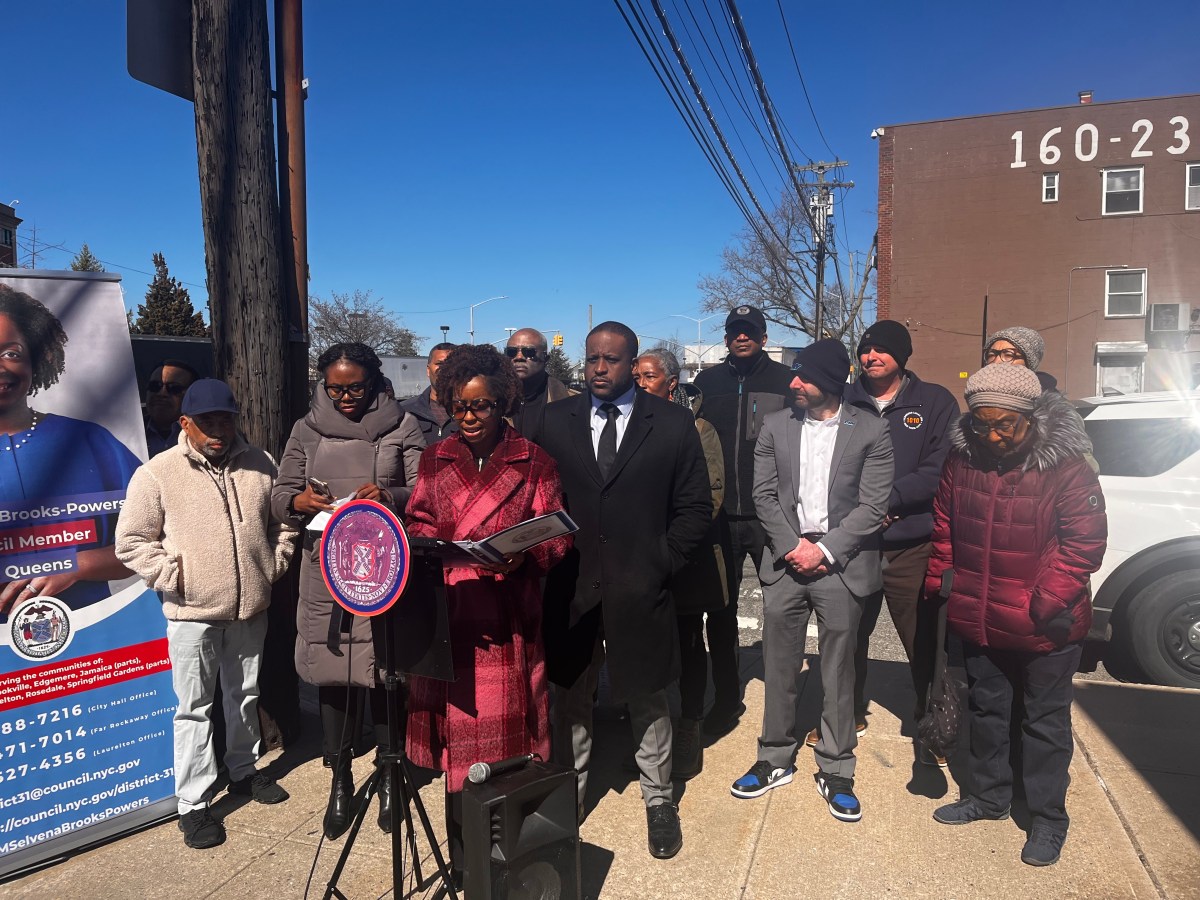
The fight for "Abolitionist Place" continues.
Since the early 2000s, activists and historical enthusiasts have worked to preserve a Brooklyn building, known as "Abolitionist Place," at 227 Duffield St., and despite demolition permits being filed in June and construction permits on Aug. 7, advocates say they’re not giving up the fight.
Some 20 people gathered outside the Landmark Preservation Commission’s office late Tuesday afternoon to garner support, distributing fliers and stickers. The commission, many said, is the only thing standing in the way of 227 Duffield’s safety.
“We have a lot of things to remember the slave owners in New York City. A lot of the streets are named after slave owners. We just want a little tiny bit of the city left of the people who resisted it,” said Raul Rothblatt, a Brooklyn resident who has fought to save 227 Duffield for about 15 years. “This is a bigger story than fighting for slavery. … This is empowerment for the people who need to be empowered.”

Robert Bianchini of ARC Architecture and Design filed permits with the Department of Buildings on Aug. 7 to convert 227 Duffield into a 125-foot, 13-story mixed-use building. If approved, the new structure will house 22,471 square feet of space, most of which would be allocated for 21 apartments.
The Landmarks Preservation Commission told amNewYork via email that the request to consider 227 Duffield St. for landmark status is “currently under review.”
Neither Bianchini nor ARC Architecture responded to amNewYork’s request for comment.
The building is the former home of abolitionists Harriet and Thomas Truesdell, and was, some say, a stop on the Underground Railroad. Despite these notable historical claims, the site has not received landmark status due to a lack of documented support. Much of its history is based on oral tradition.
Harlem resident Josh Schott, 28, a member of the Brooklyn Anti-Gentrification Network, said destroying the building would be yet another defeat in the fight against gentrification.

“It’s important to remember that history so that we can continue to do anti-racist work and dismantle white supremacy as it stands today,” he said. “This is kind of a collective responsibility for the Landmark Preservation Commission and for the owners to not destroy this as a testament to the power of abolitionist work in the face of extreme violence.”
Flatbush resident and social worker Imani Henry, 49, said the push for the building’s preservation has not lost support, despite battles lost over the past few months. For him, continuing the fight is “not up for discussion.”
“We are fighting for the right of these young people to grow up in this city. … We’re fighting for the social, economic, linguistic, political, economic diversity of New York City. It is really about if the things we hold dear will survive or if they will be thrown away, cast aside, and nobody will ever know they existed,” he said. “We’re just going to save this place. We’re not going to stop. We’re not going to rest until we do.”


































